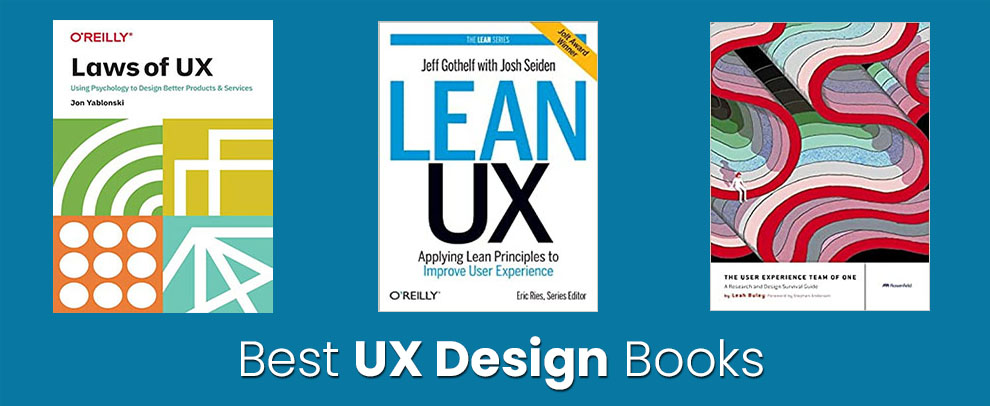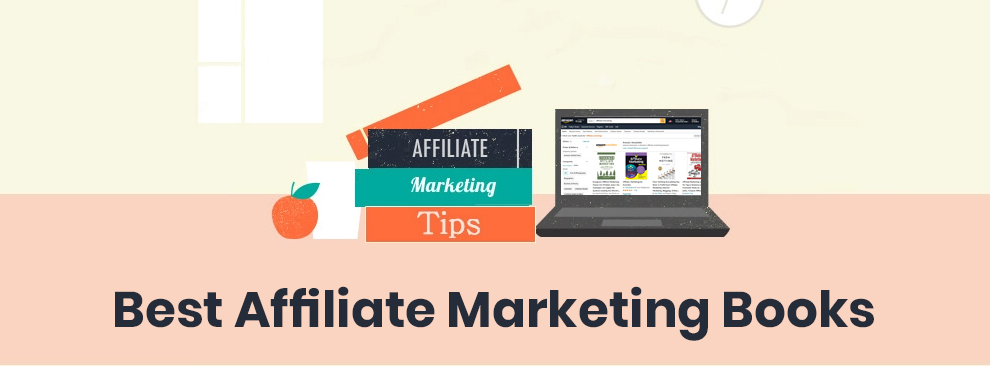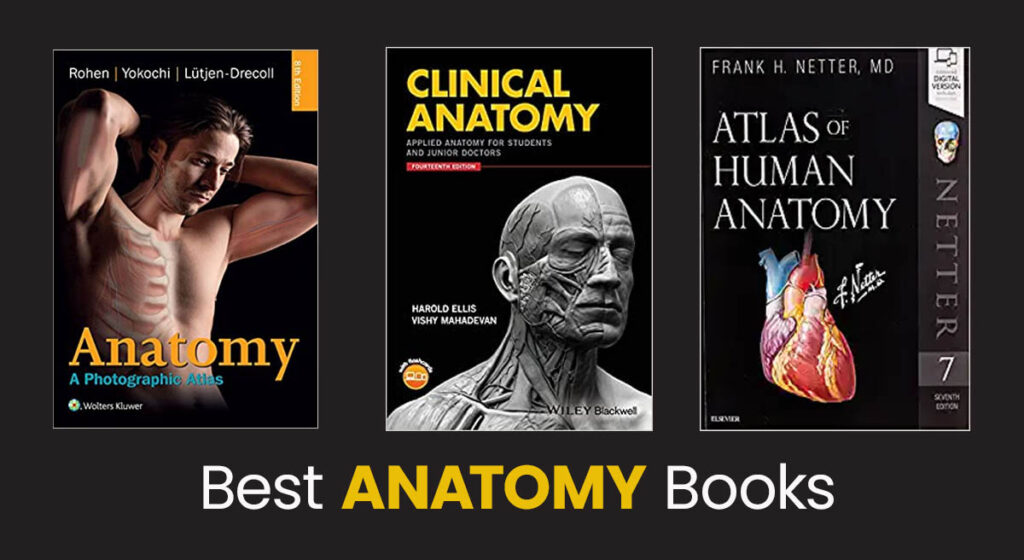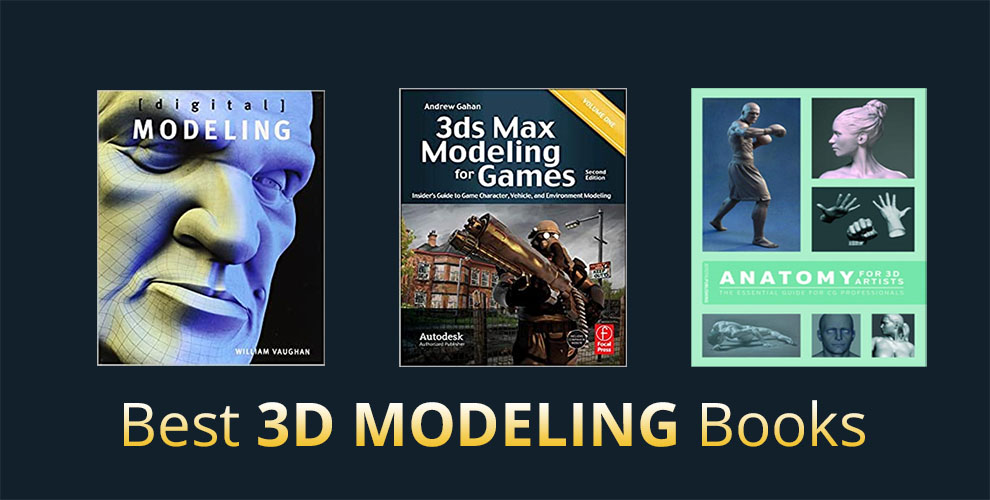Every design you see is perceived differently by different individuals. This is so because there is human psychology behind how you see things and like or dislike them.
This list of best UX design books is meant for developers who want to learn more about user psychology and how it influences and intersects with their work.
The information in these books is relevant to anyone accountable for determining the customer experience, regardless of whether they are involved in digital design or the more conventional fields of graphic design or product engineering.
These are the best UX books packed with examples and written in a way that’s accessible, so that designers can simply apply the ideas to their work.
Jump To
- Bestselling Well Structured UX Books
- The Design of Everyday Things: Revised and Expanded Edition
- Don’t Make Me Think, Revisited: A Common Sense Approach to Web Usability
- Laws of UX: Using Psychology to Design Better Products & Services
- The User Experience Team of One: A Research and Design Survival Guide
- 100 Things Every Designer Needs to Know About People (Voices That Matter)
- Lean UX: Applying Lean Principles to Improve User Experience
- Observing the User Experience: A Practitioner’s Guide to User Research
- About Face: The Essentials of Interaction Design
- Conclusion
Top UX Design Books That You Shouldn’t Miss
1. The Design of Everyday Things: Revised and Expanded Edition
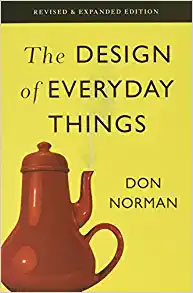 |
Check Price |
About the book
The Design of Everyday Things, the first book in our list of best UX design books, reveals that it is possible to create functional, visually attractive products.
The guidelines are straightforward: disclose confidential information, take advantage of the connections between functionality and management, and make the most of your limitations.
The idea is to make it easy for the user to perform the correct task using the proper control at the perfect moment.
Once you get your hands on these user experience books, you will realize that Don Norman’s qualifications shine through in his perceptive remarks grounded on technology, cognitive neuroscience, and management background.
This guide on human-centered design demonstrates that visuals and functionality are crucially significant, proving that design does not need to be overly challenging to be effective.
Let’s take a look at the specifications of this one of the best UX books:
| Author | Don Norman |
| Rating | 4.7 |
| Level | Beginner-friendly |
| eBook | Available |
What we didn’t like?
More instances of products that failed to meet expectations would have been helpful. Legal considerations probably hamper the writers’ freedom to disseminate this knowledge.
2. Don’t Make Me Think, Revisited: A Common Sense Approach to Web Usability
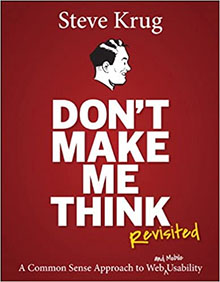 |
Check Price |
About the book
This one is usability specialist Steve Krug’s best user experience books, which was initially released in 2000 under the title Don’t Make Me Think. Since then, it has been utilized by hundreds of thousands of Web designers and programmers.
The book was used as a resource to assist them in understanding the fundamentals of easy navigational and informational design.
It is one of the most well-liked and highly suggested UX design books on the topic since it is witty, makes perfect sense, and is quite helpful.
Now Steve is back with the latest edition, this time with modernized illustrations and a brand new section devoted to mobile usability. Also, it is concise, heavily illustrated, and most importantly – entertaining!
Here are some details you might like to know:
| Author | Steve Krug |
| Rating | 4.6 |
| Level | Easy |
| eBook | Available |
What we didn’t like?
If the author had used more examples from websites rather than cartoons to demonstrate his views, the reader would have found it much easier to understand.
3. Laws of UX: Using Psychology to Design Better Products & Services
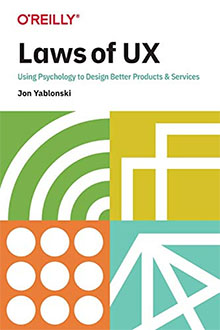 |
Check Price |
About the book
This one here is one of the best UX books for beginners. This book demonstrates how to use fundamental psychological concepts to create environments and tools that are more natural and user-friendly.
Through his UX design books, author Jon Yablonski breaks down common apps and interactions to show how Web developers can craft interactive interfaces that work with how users think.
Even the most beautiful design can backfire if it ignores the “template” of how people take things in and make sense of the world. Those failing designs instead demand that its users alter their behavior to match the layout.
Let’s take a look at the specifications of these UX books:
| Author | Jon Yablonski |
| Rating | 4.6 |
| Level | Beginner-friendly |
| eBook | Available |
What we didn’t like?
The discussion of each statute is superficial and limited to a few pages. The book might also benefit from the addition of some further depth.
It should incorporate more recent interface research as well.
4. The User Experience Team of One: A Research and Design Survival Guide
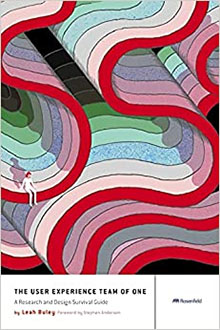 |
Check Price |
About the book
This is one of the best UX design books and will provide you with the skills and insights you need to accomplish more with less, regardless of whether you’re starting in customer experience or are an experienced professional seeking to take your business ahead.
As an alternative to the conventional array of UX deliverables, the Usability Evaluation Team of One recommends several strategies that have a significant impact with minimal investment of time and materials.
The primary sections of this book include issues such as design, research, and testing procedures; they also have advice for working remotely; suggestions for involving colleagues in the UX design phase. Learn more on design and interface with the help of these selected online courses for UX and UI.
Let’s look at the specifications:
| Author | Leah Buley |
| Rating | 4.6 |
| Level | Best UX books for absolute beginners |
| eBook | Available |
What we didn’t like?
This book’s descriptions of user experience methodology are overly basic. The commercial and technical individuals it addresses may find it lacking some depth.
5. 100 Things Every Designer Needs to Know About People (Voices That Matter)
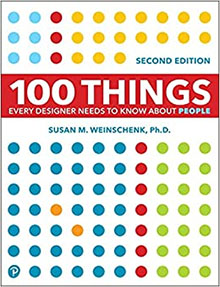 |
Check Price |
About the book
A must-have for any designer, this is one of the best UX design books that brings together solid scientific research and real-world applications. Using the information in this book, you can create programs, websites, and other things that are more user-friendly and interesting to consumers.
The message of these bestselling UX books for beginners is that we create things intending to get people to react to them. We hope they will make a purchase, continue reading, or take some other desired course of action.
It’s like navigating a different town without a guide if you go into the design process without first learning what motivates individuals to take the actions they do.
Let’s take a look at the specifications:
| Author | Susan Weinschenk |
| Rating | 4.7 |
| Level | Easy |
| eBook | Available |
What we didn’t like?
This book is ideal for those with a “Junior Psychological” level of knowledge or less. All who have worked in the field of user experience design for several years consider the book a pleasure to read but ultimately uninspiring. Definitely not the best UX books for experienced people.
6. Lean UX: Applying Lean Principles to Improve User Experience
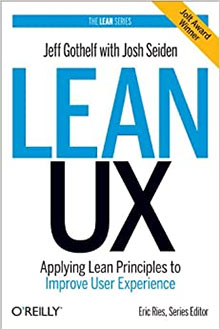 |
Check Price |
About the book
Lean UX is an approach to user interface design that takes its cues from the Lean and Agile frameworks for software development. This is one of the best UX design books and will teach you how to work closely with the other people on the production team and solicit input at an early stage.
Lean UX is an interface design methodology that works perfectly in today’s web-based world. The author walks you through the fundamentals of Lean UX, teaching you how to quickly explore design concepts, evaluate them with legitimate customers, and continuously alter your design depending on what you discover.
With the help of these UX books for beginners, you’ll learn to take control of the design process by practicing short, iterative cycles that allow you to evaluate many options and determine which ones are most beneficial to the company and the end user. Lean UX demonstrates how to implement this improvement.
| Author | Jeff Gothelf |
| Rating | 4.4 |
| Level | Beginner-friendly books for UX designers |
| eBook | Available |
What we didn’t like?
Some of the concepts in this book appear to have been discussed for a long time in the HCI field but are being presented here as if they were completely new and ground-breaking. This could be fine for inexperienced UI/UX designers or clueless software managers.
7. Observing the User Experience: A Practitioner’s Guide to User Research
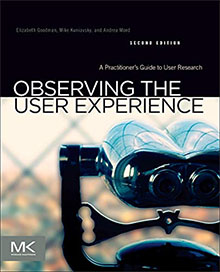 |
Check Price |
About the book
This is one of the best UX design books that provides designers and developers with a comprehensive toolkit of approaches to help them put themselves in the shoes of their consumers.
One of the most challenging aspects of making a product is bridging the gap between the ideal and actual personas of the product’s target audience. By keeping an eye on the UX, you may close the gap between your assumptions and the reality of your users’ wants, needs, and potential success with your product.
This book delves deeply into 13 usability evaluation research approaches that can be used as a springboard for creating superior Web, software, and mobile solutions.
In addition, this is one of the top UX design books written with an awareness of the constraints of real-world research and development, such as limited resources, restricted timelines, and established procedures.
Let’s look at the specifications of this book:
| Author | Elizabeth Goodman |
| Rating | 4.4 |
| Level | All levels |
| eBook | Available |
What we didn’t like?
These are books for UX designers that have some experience. Otherwise, it could be challenging for people who are just starting. Some examples do not relate to the subject matter and are a major distraction.
8. About Face: The Essentials of Interaction Design
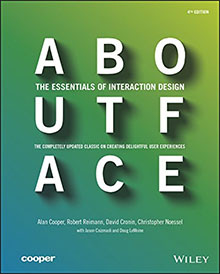 |
Check Price |
About the book
The Essentials of Interaction Design is the most recent revision of the seminal text that established and advanced the field of interactive systems. The widespread adoption of mobile devices, such as smartphones, is accounted for, in this in-depth user experience books.
Updates cover mobile app development, tactile interfaces, screen resolution, and more. The redesigned, full-color interior and unconventional arrangement better demonstrate cutting-edge design ideas.
Companies who place a premium on design are finding great success, propelling the interaction design industry forward and conditioning consumers to view “design” as an essential component of commercial success.
Customers have a low tolerance for bad digital experiences, and businesses everywhere are adapting to meet this new reality.
The first edition of this one of the top UX design books is widely credited with popularizing the term “interaction design,” and the newly revised and expanded Fourth Edition of the book remains the industry standard for providing cutting-edge guidance for design professionals.
Let’s look at the specifications:
| Author | Alan Cooper |
| Rating | 4.6 |
| Level | Novice |
| eBook | Available |
What we didn’t like?
This is a terrific book for those who are just starting out, it is, however, not very helpful for those who already have even a basic understanding of user experience (UX).
Conclusion
To conclude, The Design of Everyday Things: Revised and Expanded by Don Norman tops our list of the best books for UX designers. The Design of Everyday Things is an insightful introduction that provides a foundational understanding of how and why certain designs can satiate the needs of their target audiences while others fail to do so.

